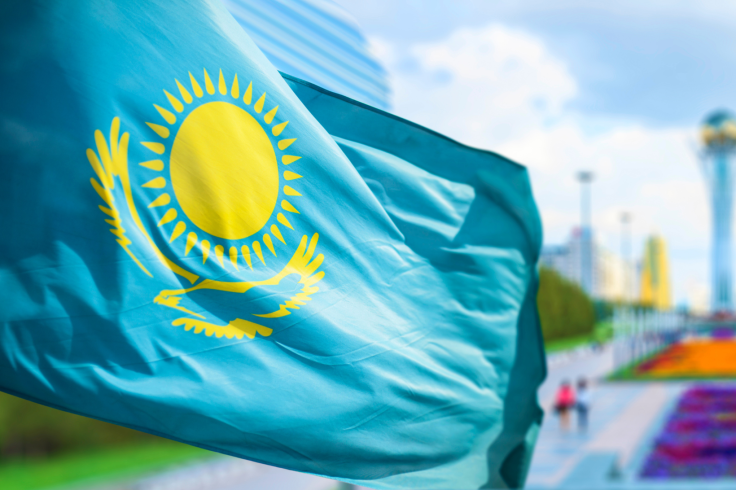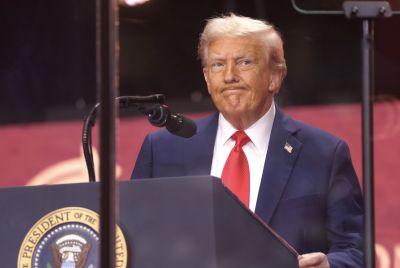Kazakhstan's Strategic Vision: Fostering the Middle Corridor for the Future of Global Trade
With cargo volumes surging 65% in a year, Kazakhstan is turning the Middle Corridor into a powerful new land bridge between Asia and Europe.

At a time when global supply chains face mounting pressures from geopolitical tensions, congested maritime chokepoints and climate-driven disruptions, reliable, secure and resilient alternatives matter to businesses and governments alike. For Europe and Western markets, which rely on timely access to components, critical raw materials and intermediate goods, the Trans-Caspian International Transport Route, commonly known as the Middle Corridor, is no longer a theoretical trade alternative. It is an operational and expanding artery that offers shorter, more secure transit windows for selected cargoes, an important diversification away from single-channel dependence, and a commercially viable route that merits serious attention. Situated strategically at the heart of this corridor, Kazakhstan is taking a pivotal leadership role in its development and expansion.
The Middle Corridor is a functioning, multimodal network linking China and East Asia with Europe via the Caspian, traversing Kazakhstan and neighbouring Central Asian countries before continuing through Azerbaijan, Georgia and Türkiye. Over the past years the route has moved beyond pilot shipments and conference discussion to measurable, sustained commercial growth, driven by shippers' increased demand for speed, predictability and geopolitical diversification. Today, the Middle Corridor is at least 2,000 km shorter than existing overland alternatives, making it the most viable land transport route from Asia to Europe that now serves as a key regional hub for Central Asian integration and infrastructure development among participating economies.
Recent data demonstrate the corridor's rapid commercial ascent, underpinned by infrastructure investments and policy reforms led by the administration of President Kassym-Jomart Tokayev, who has prioritised the Middle Corridor on Kazakhstan's trade agenda. Cargo volumes along the route rose 65% year-on-year in 2024; in the first half of 2025 they nearly doubled, from 19,370 to 40,200 TEU. According to the World Bank, by 2030, freight volumes could triple to 11 million tonnes, with a 30 percent increase in trade between China and the EU.
Currently, 85% of continental freight traffic between China and Europe passes through Kazakhstan. This growth signals that shippers increasingly value speed, stability, reliability and efficiency when choosing routes between Asia and Europe.
The surge reflects both a proactive private sector that increasingly wishes to invest, and a political commitment by regional governments to reform and harmonise transport policies, accompanied by substantial state investments in modernising hard infrastructure. The Government of Kazakhstan is accelerating terminal modernisations, upgrading rail capacity where needed, and expanding intermodal transfer capability. In January 2024, participating countries endorsed a coordinated roadmap for trade facilitation and infrastructure projects. The goal is to reduce customs times, introduce artificial intelligence into cargo management processes and introduce unified electronic transit documents.
Currently, work is underway to modernise Kazakhstan's key border checkpoints. This year, 8 checkpoints will become fully operational, while over the next three years, another 34 will be reconstructed. To streamline operations, the government will soon be launching a single digital customs and logistics system called 'Smart Cargo', offering private companies equal automated access to infrastructure. These measures are designed to reduce handling times, lower costs and create a repeatable, business-friendly service offering for logistics operators and shippers. Recent growth in corridor volumes underlines the market response to these improvements.
For Western businesses evaluating transport options, the Middle Corridor presents a number of concrete advantages: shorter transit windows for goods compared with the longer sea routes or land alternatives, political stability and security, a land bridge that mitigates exposure to single-point maritime risks, and proximity to Central Asian mineral resources increasingly important for the low-carbon technologies of the 4th industrial revolution. Kazakhstan remains committed to ensuring that using the corridor is not only faster in many cases but also administratively straightforward and commercially predictable for importers and exporters.
Scale requires partnerships and positively, the international community is responding: at the EU-Central Asia summit last April, European institutions announced meaningful support for connectivity and transport cooperation under the Global Gateway framework, a development that can help translate strategic commitments into on-the-ground projects, technical assistance and financing partnerships. So far, €22 billion (£19 billion or $ 25 billion) in investments has been committed through the Global Gateway package and partner investors between 2024 and 2025. Kazakhstan stands ready to work with international partners, both public and private, to design projects with clear commercial returns for all and transparent governance.
However, despite its rapid growth, we do not see the Middle Corridor as an attempt to replace established maritime routes. We see it as a complementary option that adds resilience, shortens transit for selected cargoes, and opens new geographies for industrial cooperation between Europe and Asia. For Western businesses that value predictability, speed and diversified supply links, Kazakhstan and its partners offer a competitive, improving corridor,one built on clear rules, transparent partnerships and tangible operational progress.
Looking ahead, Kazakhstan will continue to develop the Middle Corridor. In the coming period we will begin implementing multifunctional, AI-powered digital freight-management platforms to accelerate transport operations and reduce customs-clearance times. We will continue to prioritise modernisation and will increasingly host and participate in international forums and initiatives that bring together policy makers, industry leaders and financiers to translate high-level commitments into pipelines of implementable projects. The Astana Think Tank Forum taking place on 15–16 October 2025, for example, will be a focal platform for advancing practical discussions on connectivity, investment pipelines and scaling supply chains.
Kazakhstan is ready to translate words into outcomes: safety and stability, operational guarantees, regulatory clarity, and project transparency. We invite global partners who share an interest in stable supply chains, durable infrastructure, and sustainable economic cooperation to work with us. Together, we can make the Middle Corridor the backbone of Eurasian backbone.
© Copyright IBTimes 2025. All rights reserved.




















